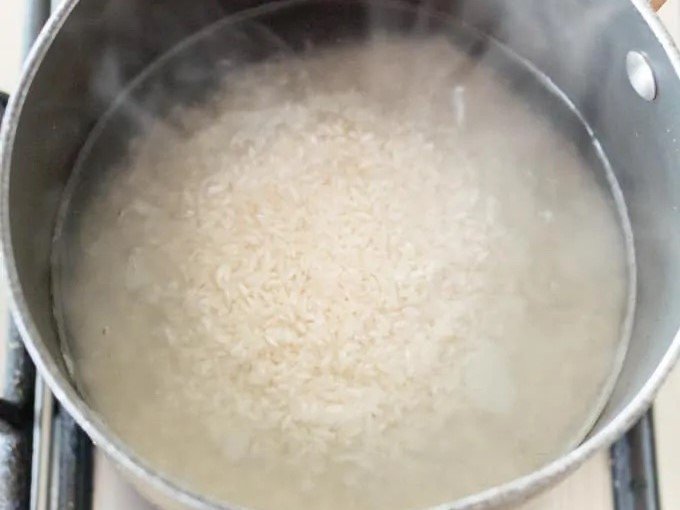RICE MUCILAGE (LOʿĀB-E BERENJ)
The difference between rice mucilage and rice starch lies in the method of preparation. In the case of rice starch, the entire rice is cooked and utilized as a sizing material. On the other hand, for rice mucilage, only the mucilage part is gathered from the upper portion of the boiled rice and is subsequently employed as a sizing material.
Recipes
In Golzār-e Ṣafā (950 A.H./1543 A.D.) and Resāle dar Bayān-e Tariqe-ye Sāḵtan-e Morakkab va Kāḡaḏ-e Alvān, (13th A,H./19th A.D.) mucilage from rice is mentioned as a sizing material. In some of his couplets on sizing material in Golzār-e Ṣafā, Seyrafi, after discussing rice starch and fish glue, mentions that there are six mucilages suitable for sizing materials: first, psyllium-seed mucilage; second, sweet melon juice; third, cucumber seed; fourth, grape syrup; fifth, rice mucilage; and last of all, gum arabic. He positions rice mucilage as the fifth material out of six ingredients for sizing, following starch and fish glue. He advises that when preparing rice mucilage, the water used for boiling should be free of oil:
از برنج است دگر بار لعاب کو بود خالی از چربی آب
From rice, a gloss, and mucilage's embrace,
Oil-free water, in the sizing race
In Resāle dar Bayān-e Tariqe-ye Sāḵtan-e Morakkab va Kāḡaḏ-e Alvān in 19th century, we find a recipe where a variety of sizings are recommended, including rice mucilage, specifically for papers that are blue turquoise in color and when the pen encounters difficulty in smooth movement. The recipe is mentioned in mixed sizes (See Mixed Sizes).
Experiment:
To start, take 1 cup, approximately 200 grams, of white rice and wash it thoroughly. Transfer the rice into a pot and add 600 ml of water in a ratio of 1:3 for rice to water. Boil it over low heat for 20 to 30 minutes, stirring with a wooden stick until the rice mucilage is formed. Sieve the rice and collect the mucilage that forms on top in a tray or glass container. Let it cool and dip the paper in for an hour. Take it out and let it dry. Finally, burnish the paper until it achieves a smooth texture.


